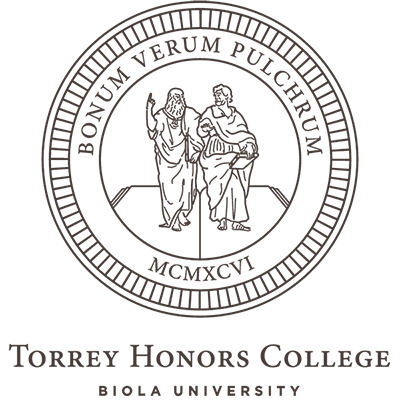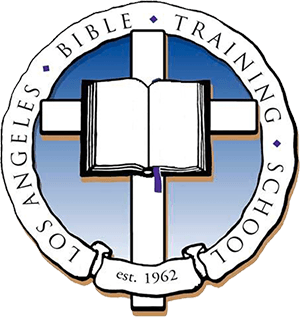A scene from The Canterbury Psalter (12th century)
Blog
Of the Father’s Love Begotten
When you consider the Trinitarian background of the incarnation, you usually summon to mind one of two possible mental frameworks. First is the “one God in three persons” framework, which involves thinking of how each person of the Trinity is fully God, but none are each other. The second option is the “Father begets the Son and spirates the Spirit” option, which involves thinking of how each person of the Trinity is related to each other through irreversible relations of origin. I’ve nicknamed these two styles of trinitarian schemas the Quicunquan and Nicene styles, after the two creeds that best encapsulate them (Quicunquan being an intentionally odd term for the so-called Athanasian Creed, drawing on its first word in Latin). Here are diagrams: The two frameworks do not contradict each other, any more than the creeds they are named for do. You need to…
W.B. Pope on “Theological Coinage”
William Burt Pope starts his book on The Person of Christ (2nd ed., 1875) with a few observations about terminology. Specifically, he notes a certain “adjustment of our phraseology” which takes place in Christology, but also more broadly in theology. Pope considers the task of formulating doctrines to be strictly subordinate to the task of understanding Scripture’s own formulations. He rather laments our need to come up with new language to speak theologically, and wishes it were possible to simply say exactly what Scripture says. But then again, as long as we are coining theological language, we should make sure it’s well-coined. And when it is, Pope is willing to make startlingly high claims for the power of theology. So it’s hard to say if Pope has a low view or a high view of theological terminology. Here’s how he sets up the discussion:…
LATC 2023 Registration
Oliver Crisp, Katya Covrett, and I got together and planned a swell theology conference on the doctrine of the church, and we’ve been trying to actually convene it for a couple of years now. Global events transpired, of course. But the Los Angeles Theology Conference is coming back, with a great set of speakers and our traditional LATC conference format: publisher exhibits on site, refreshments on hand, and ample time for conferring theologically. We’ve moved from January to March, and have spread into a third day, but otherwise the successful LATC format is unchanged. The official LATC site is here; the Eventbrite registration page is open for ticket purchases here; and the detailed schedule is posted (drumroll please) right here: Weds Mar 15: 7 pm, Plenary 1: Natalie Carnes, “Nature, Culture, Church: Reconsidering the Church-World Divide” Thurs Mar 16: 9am, Plenary 2: Millard J….
Ezekiel in Ephesians
Some Sweeping Gestures Both books take place under the sway of one dominant image made known by revelation: The Lord who is above all things, seated on the throne of divine authority, in the form of a human. Both books are somewhat oblique in their account of this dominant image: Ezekiel testifies that the vision is a likeness having an appearance of what looked like one on a throne, but is highly selective in his visual description. Paul hints at the image of the enthroned Christ (“in Christ in the heavenly places,” 1:3) in his opening remarks, before finally making his theme explicit in the prayer that his readers would be given supernatural knowledge of the power that placed Christ on that throne. Both books share a rhetorical strategy of stunning the reader with an opening jolt of complex and comprehensive spiritual realities. Words…
The Doctrine of the Son in Hebrews
Remarks on R. B. Jamieson’s The Paradox of Sonship (IVP Academic, 2021) Regarding this book I have much to say, having been enthusiastic about the idea of it since Bobby Jamieson described it to me as early as 2016, and having been enthusiastic about the first version of the manuscript since I glimpsed it in 2017. I hope the time is near when we can begin describing not only the book’s merits but also its influence, which deserves to be substantial. In addition to being a virtuoso individual performance and a close reading of this one particular and rather unique New Testament book, The Paradox of Sonship also represents a style of reading that holds great promise for biblical and theological studies at large. I use the phrase “style of reading” rather than the imposing word “methodology” advisedly, since I am distantly aware of…
Is, or Was, Forever Generated
Augustine raises the question in a couple of places:1 Is it better to say that the Son was eternally generated, or is eternally generated? Hilary of Poitiers also raises the same question.2 It draws the attention of Peter Lombard, who gives it an entire chapter in his Sentences,3 where he resolves it in dialogue with Augustine and Hilary, but also Gregory the Great, Chrysostom, and Origen. The treatment is typically Lombardian, concerned to read Scripture accurately and also to reconcile apparent contradictions in what has been said “among the doctors.” Lombard’s summary view: “Let us say that the Son was born from the Father before all time, and is forever being born from the Father, but more fittingly, is forever born.” (p. 57) “Was born” has the advantage of using the past tense to indicate a perfectly accomplished eternal act; “is forever being born”…
De Moor De Trinitate
I just picked up the first-ever English translation of Bernardinus de Moor’s eighteenth-century work on the Trinity. Running 382 pages and costing $50 hardcover, it’s a good book and I’m glad to have it. Here’s why. De Moor (1709-1780) was a theology professor at Leiden from 1745 until his death, and his theological project was essentially conservative. He liked the Protestant Orthodox system and intended to preserve and extend it. Willem J. van Asselt said “de Moor classified and combined material from the Reformed dogmatics produced by his predecessors at Utrecht and Leiden into a whole.” In particular, de Moor’s major production took the form of an expansive running commentary on a rather concise theological system by one of his teachers, Johannes à Marck. So de Moor’s multivolume theology has the title Continuous Commentary on Johannes à Marck’s Compendium of Didactico-Elenctic Christian Theology (Commentarius…
On a Self-Cancelling Chalcedon
“What was actually said by this formula from Chalcedon?” Dietrich Bonhoeffer put this rhetorical question to his students in Berlin in 1933.1 Then, of course, he went on to answer it in lecture form. Rehearsing the four fearful negatives of the Definition (unconfusedly, unchangeably, indivisibly, inseparably) he explained the errors excluded by them. He emphasized that Chalcedon seemed to forbid all the possible combinations of “nature” and “person,” almost as if its framers had invoked these categories and enshrined them in negatives just to show that nothing positive could be said about them, or at least nothing beyond the boundaries just drawn: What is being said with the Chalcedonian formula is this: that all options for thinking of all this together and in juxtaposition are represented as impossible and forbidden options. Then there is no longer any positive assertion that can be made about…
Two Aspects of Relation
In his book Trinity in Aquinas (Sapientia Press, 2003), Gilles Emery OP has a deft explanation of how “relation” works in Thomas’ account of the Trinity in the Summa Theologiae. I read it quickly (it’s on p. 141), grasped what he was saying in a general way, and read on. But then Emery kept coming back to this little 200-word explanation in subsequent pages. He’d make a point, and then refer to “the double aspect of relation that we exposed earlier” (158). When I tried to draw “the double aspect of relation” out of my memory, I found I wasn’t exactly quick to the task. So here’s the key section of the key paragraph, typed in and broken up into smaller units: The analysis of relation is founded on the Aristotelian doctrine of categories or predicaments. For St. Thomas, real relations in our world…
Roles
When did the word “role” come to seem like an obvious word to use to describe how the three persons of the Trinity are distinct from each other? I hear it all the time from Christians who are serious about being Biblical in their thinking, but who haven’t had the kind of theological training that would direct them to use more traditional terms (persons in relation, hypostases, etc.). They reach for a word in their current vocabulary whose ordinary usage seems helpful. When they do this, “role” seems self-evident. But when did it start to seem that way? It’s a hard question to research because it’s a question about popular usage more than about professional theological writing. So I’m going to start this blog post with the earliest instance I’ve run across, and I’ll silently update the post whenever I find better or older…
“On When Christ was Called Such”
The Son of God, coeternal and consubstantial with the Father, took human nature to himself, died, and rose again. Who is the person who did all this, this person we are talking about? Jesus Christ. But if you say a few more sentences about him, you quickly find yourself needing to use names or titles that make distinctions. You need to pick out this one same person, but from different perspectives, or in different aspects, or at different moments. For example, if you say “let me tell you something Jesus did,” your listeners will expect, perfectly reasonably, to hear about something the son of Mary did. If you then go on to say, “he became incarnate,” they will have a moment of disorientation. Wasn’t he not yet the son of Mary, but about to become the son of Mary? Similarly, we can easily get…
Double Consubstantiality
The Son of God is homoousios, consubstantial, with the Father. This consubstantiality means that there is one divine nature, and that Father and Son are persons who both have that numerically same nature. When the Son takes human nature into personal union with himself, he assumes another nature while of course retaining his divine nature. So the two natures are united in him, that is, in his person (hypostasis). We can say that in the incarnation he is consubstantial with humanity. In fact, we did say this, in the early centuries during which the councils were expounding Christian doctrine. Christ is consubstantial with his Father divinely, and consubstantial with his mother humanly. The result has been called double consubstantiality, and while it’s a lot of syllables, it is a beautiful doctrine, well suited for teaching memorably. It enables us to speak of the two…
9.5 Theses on Trinity and Soteriology
This is a little exercise I wrote as part of a paper on Protestant Trinitarianism at the 2017 Tyndale Conference in Cambridge. The paper didn’t end up resulting in anything I wanted to publish. But recently I heard some people who ought to know better, musing about how great it would be if there was a way of doing Trinitarian theology that was more robustly Protestant. Suddenly I remembered these rules I had drafted, but had failed to post. So, belated but still in the spirit of holding forth (protestare) the truth, I do hereby post these theses: 9.5 Theses on Trinity and Soteriology 1. God’s identity precedes his actions in salvation history. 2. The doctrine about God’s identity, which is what the doctrine of the Trinity is, should be stateable in a way that recognizes the antecedent priority of God’s identity in himself….
Trinity, Father, and “God” in John of Damascus
Very early in John of Damascus’ On the Orthodox Faith, he says this about God: We also know and confess that God is one, that is to say, one substance, and that he is acknowledged in three hypostases and exists as such, by which I mean as Father and Son and Holy Spirit, and that the Father and the Son and the Holy Spirit are one in every respect except with regard to unbegottenness, begottenness, and procession, and that for our salvation the only-begotten Son and Word of God and God … was born of the holy Virgin… (On the Orthodox Faith, Ch. 2; p. 61))1 I’ve added underlining to draw attention to what John means when he says “God.” In this passage, he links “God” to “one substance” existing “in three hypostases.” He does not use the word “Trinity,” but that is what…
Two Kinds of Own-Making in Christology
“The Word became flesh,” and “he became a curse for us.” These two claims, from John 1:14 and Galatians 3:13 respectively, use the same verb (became) to explain how Jesus brought about redemption. But surely Jesus didn’t “become flesh” and “become a curse” in the same way. To become flesh is to take human nature into personal union, to assume human nature for salvation, for its healing and renewal. But to become a curse is not to take a curse into personal union for its healing and renewal; it makes no sense to talk about saving a curse. John of Damascus has a helpful explanation of how to distinguish these two things. He does it by noting the difference between two kinds of “appropriations” in Christology. The Son appropriates human things, making them his own, in two distinct ways. Here is John’s whole treatment…
Think of “Trinitarian Missions” Before Thinking of “Economic Trinity”
[The first two paragraphs are background; readers conversant in modern trinitarianism can skip to the third paragraph for the relatively new analysis.] Under conditions of modernity, a certain way of talking about the Trinity emerged. Theologians began speaking not just of the triune God and the economy of salvation, or the triune God in the economy of salvation, but rather of “the economic Trinity.” A minor adjustment, surely. But the usage made it possible to contrast that “economic Trinity” with “the immanent Trinity,” where “immanent” means remaining within itself, or considered without reference to anything beyond itself. Again, it’s a fairly minor linguistic habit, and it has the advantage of letting us make theological distinctions we sometimes need to make: God in se as distinct from God for us. At its best, the immanent-economic distinction is basically the ancient Christian distinction between theologia and…
Reduction Back to Eternal Generation
There’s an important move Augustine makes at several points in his Trinitarian theology, especially when he’s giving himself space to be discursive and let the big ideas unfold on their own terms. We can call it “reduction back to eternal generation.” Having a name for it is handy, because it almost always occurs in close proximity to some other important moves (it keeps close company with partitive exegesis and inseparable operations). But it’s worth singling out for focused attention. Here’s how it works. In his sermons on John 5, Augustine spends a long time drilling down into the meaning of Jesus’ words, “the Son can do nothing of his own accord, but only what he sees the Father doing. For whatever the Father does, that the Son does likewise. For the Father loves the Son and shows him all that he himself is doing.” (John 5:19-20) Augustine takes…
“Relational Trinity” Means What Now?
This is actual reader mail from 2021. I’m pulling it out of the drafts folder and posting it because (a) there’s been some online chatter lately that suggests some readers might be interested in the clarification it attempts, and (b) I’m doing a little exercise where I blog every day for a while to get my writing-in-public mojo back, and here it sits, 500 already-written words that aren’t too shabby. Now that your expectations are stratospheric, here it is. A friend who teaches in a theological field somewhat removed from the churn of contemporary discussion wrote to me and said, I’m getting wind of a distinction the modern theologians are making between ‘classical’ trinitarianism and ‘relational’ trinitarianism, and I’m hearing that the theologians are calling the second of those ‘revisionist.’ It is surprising—and more than a little alarming—that modern theologians are saying that the…
About This Blog

Notes, quotes, thoughts, trial balloons, reviews, Twitter threads that turned out okay, position papers, miscellanies. Lightly edited theology writing from Fred Sanders.


